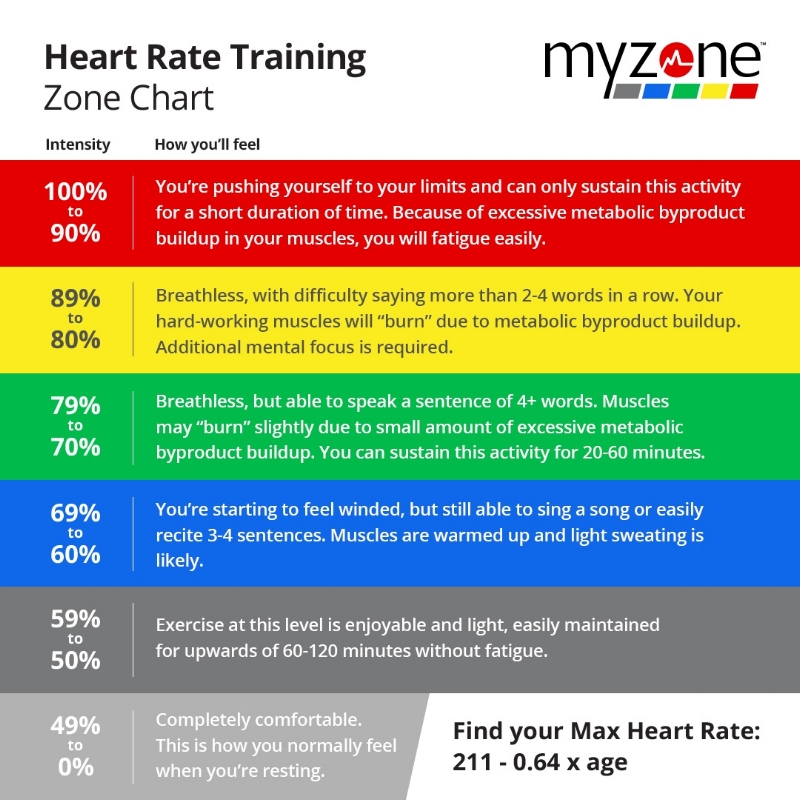A heart rate monitor can help you better understand the effectiveness of your workout. You can gauge whether your are pushing too hard or not pushing hard enough.
Just like any other muscle in the body, the heart is a muscle you target, train, and strengthen. And (just like any other muscle in your body) going super fast, heavy, or hard isn’t necessary to see results.
A heart rate monitor is a good tool for aerobic training without putting too much stress on the rest of your body. You can strengthen and improve your heart without having to “kill” yourself in a workout.
Types of Heart Rates
Resting Heart Rate (RHR)
This is the beats per minute while your resting. Athletes usually have a lower resting heart rate, because their heart has been trained for cardiovascular efficiency. The average adult has a resting heart rate between 60 -70. An athlete may have a resting heart rate as low as 40.
Maximum Heart Rate (MHR)
This is the fastest your heart can pump during an aerobic workout. To help you find your MHR use this formula: 211 – (0.64 x age in years). For example, a 35 year old would have an MHR of 188.
Types of heart Rate Zones
Because we use Myzone at Calistoga Fit, we will reference the zones based on Myzone standards. Myzone uses the above MHR formula as reference for zone levels.
Staying in between the blue-green zones will help you build endurance. You may feel as if you need to push harder or go faster, but staying in this zone for a longer period of time will help improve your aerobic threshold.
Of course there’s a time and place for going hard and aiming for the red zone (like High Intensity Interval Training). Just remember, your heart is a muscle you target and train. Just like working on your biceps, there are different tools, formats, and methods to achieve your target results.
Want to try heart rate training? Sign up for a Myzone spin class at Calistoga Fit.

